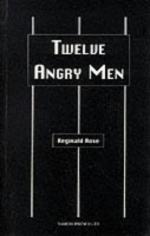
|
| Name: _________________________ | Period: ___________________ |
This test consists of 5 multiple choice questions, 5 short answer questions, and 10 short essay questions.
Multiple Choice Questions
1. What is the setting in which the reader first meets the twelve characters who give the play its name?
(a) The murder scene.
(b) The jury room in a New York court.
(c) The bus in which the jurors are being transported to court.
(d) The court room.
2. What important facts are revealed about the circumstances of the defendant's life by the juror who votes "not guilty" in the first round of voting?
(a) He is an orphan and member of a minority group.
(b) He has had a difficult life in a ghetto; his mother is dead and his father has beaten him regularly.
(c) He has had a difficult life in a ghetto without a father.
(d) He has been in and out of prison for stealing cars.
3. According to the defendant, why did he buy the alleged murder weapon?
(a) Because he lost the one he had before.
(b) Because the one he had before was stolen.
(c) To give it as a present to his friend.
(d) Because his father beat him.
4. What important information casts doubts on the eyewitness' story in the first discussion of the evidence?
(a) The eyewitness has to walk a long way to the door after hearing the body fall.
(b) The eyewitness wears glasses.
(c) The eyewitness is old with impaired vision.
(d) The eyewitness claims to have seen the murder through the windows of a passing elevated train.
5. What term used in Act 1 establishes that the defendant is thought to have committed a murder that is intentional and deliberately planned ahead of time?
(a) Second degree murder.
(b) Murder with malice aforethought.
(c) Manslaughter.
(d) First degree murder.
Short Answer Questions
1. In what way is the vote suggested by the dissenting voter different from the previous vote?
2. Apart from the action of the dissenting juror in Act 1, what other contributions from a juror suggest there is at least one other juror willing to stand up against the behavior of others?
3. How does the dissenting juror discredit the allegation that the murder weapon is unique?
4. What important fact does Juror Three point out about something the defendant purchased on the day of the murder?
5. What does Juror Ten point out about an eyewitness to the murder?
Short Essay Questions
1. What is Juror Eight's response to the declaration of Juror Sevel about the defendant's criminal record?
2. What inconsistency in Juror Ten's arguments does Juror Eight point out, and what is the result?
3. What are the physical and personal concerns facing the jurors as they begin their deliberations?
4. How do the jurors respond to the defendant's explanation of his purchase of the knife and the fact that he cannot produce it?
5. What views do the jurors have about the defendant's background?
6. What is the defendant's alibi and how does Juror Four respond to it?
7. Which juror refers to the defendant's criminal record, and what does this consist of?
8. What additional evidence that incriminates the defendant does Juror Three present to the jury in Act I?
9. What is Juror Ten's contribution to the discussion of the evidence?
10. What information does Juror Three present in an attempt to draw the jurors' attention to the "facts of the case"?
|
This section contains 1,319 words (approx. 5 pages at 300 words per page) |

|




